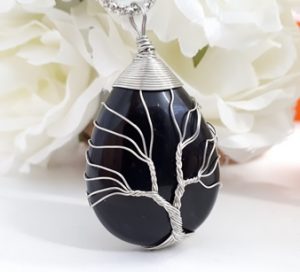
Feng Shui Fundamentals: Key Elements to Revitalize Your Living Space
Feng Shui, an ancient Chinese practice, is more than just a trend; it’s a philosophy that emphasizes the harmonious arrangement and flow of energy (or Chi) within our living spaces. When applied effectively, Feng Shui can invigorate your home, improve well-being, enhance relationships, and even boost prosperity. This article will guide you through the fundamental elements of Feng Shui and offer specific tips to revitalize your living environment.
Understanding the Bagua Map
Central to Feng Shui is the Bagua map, a tool used to analyze and enhance the energy of your space based on the eight life areas: Wealth, Fame, Love, Family, Health, Creativity, Knowledge, and Career, plus the center which represents overall health. To apply it, overlay the Bagua map over your floor plan. Each section corresponds to specific areas of your life, and enhancing these areas can lead to balance and prosperity.
Tip: Use a simple digital drawing tool or graph paper to sketch out your floor plan. Mark the areas according to the Bagua map, identifying which sections of your living space need attention.
The Five Elements
Feng Shui revolves around five key elements: Wood, Fire, Earth, Metal, and Water. Each element embodies different qualities and impacts your living space in unique ways. Here’s how to incorporate each element effectively:
-
Wood: Symbolizing growth and vitality. Integrate plants, wooden furniture, and green colors to promote energy.
Tip: Incorporate indoor plants like snake plants or pothos to invite life and enhance the air quality.
-
Fire: This element signifies passion and transformation. Use candles, red accents, or triangular shapes to spark energy.
Tip: Place a red candle on your dining table to invite warmth and family bonding.
-
Earth: Offering stability and grounding, use earthenware, crystals, and shades of yellow or brown for a calm ambiance.
Tip: Incorporate quartz crystals to invite nurturing and support; place them in relation to the Family area of the Bagua.
-
Metal: Represents clarity and efficiency. Use metal decor, colors such as white or grey, and circular shapes for focus.
Tip: Introduce metallic frames or a sculpture in the Creativity area to harness innovation and clarity.
-
Water: Recognizes abundance and fluidity. Utilize mirrors, flowing shapes, or blue tones to enhance prosperity.
Tip: Create a small indoor water feature or strategically place a mirror to double an important area, such as your workspace.
Clutter Clearing for Fresh Energy
A fundamental aspect of Feng Shui is decluttering your space. Clutter creates stagnant energy, preventing the flow of Chi. Start by assessing each room, removing items that no longer serve a purpose or bring you joy.
Tip: Tackle one room at a time, and consider the “12-12-12” rule—find 12 things to throw away, 12 to donate, and 12 to return to their proper place.
Layout Optimization
The arrangement of furniture can significantly impact energy flow. Follow these principles to optimize your layout:
-
Command Position: Place major pieces like beds and desks in positions where you can see the entrance. This provides a sense of control and security.
Tip: If this is not possible, use mirrors strategically to reflect the entrance while sitting or lying down.
-
Clear Pathways: Ensure easy navigation through each room, thus promoting the smooth flow of energy.
Tip: Reorganize furniture to create open pathways and avoid heavy items blocking entrances or hallways.
Colors and Light
Colors play an essential role in Feng Shui. They can energize, calm, or create specific moods in a room. Bright colors (like reds and yellows) stimulate life, while cooler tones (like blues and greens) foster tranquility.
Tip: Use color psychology wisely based on the areas you aim to enhance. Warm, inviting colors work well in social areas, while calming tones are better in bedrooms.
In addition to colors, lighting is crucial. Natural light energizes a space, while soft, ambient lighting promotes relaxation.
Tip: Use sheer curtains to allow light while ensuring privacy, and augment with soft lamps to create inviting atmospheres.
Creating a Personal Sanctuary
Lastly, remember that Feng Shui is about personal connection to your space. Design spaces that reflect your personality and purpose.
Tip: Incorporate personal artifacts, meaningful artwork, or spaces for solitude that make you feel at home.
Frequently Asked Questions (FAQ)
1. Where can I find Feng Shui accessories?
Consider visiting local home goods stores or checking online platforms like Amazon or Wayfair. Specialty stores focusing on Asian decor may also carry authentic items such as bamboo plants or fountains.
2. Are there any books or resources you recommend?
Yes! "The Complete Illustrated Guide to Feng Shui" by Robert F. Theiss and "Feng Shui Your Life" by Jayme Barrett are excellent resources for both beginners and seasoned practitioners.
3. Can I implement Feng Shui principles on a budget?
Absolutely! Many Feng Shui changes can be made with existing items. Rearranging furniture, decluttering, and using houseplants are easy and affordable ways to enhance your space.
By applying these Feng Shui fundamentals, you can revitalize your living space into a harmonious sanctuary that reflects balance, positivity, and well-being. Start small, and see how these changes can transform your abode!







